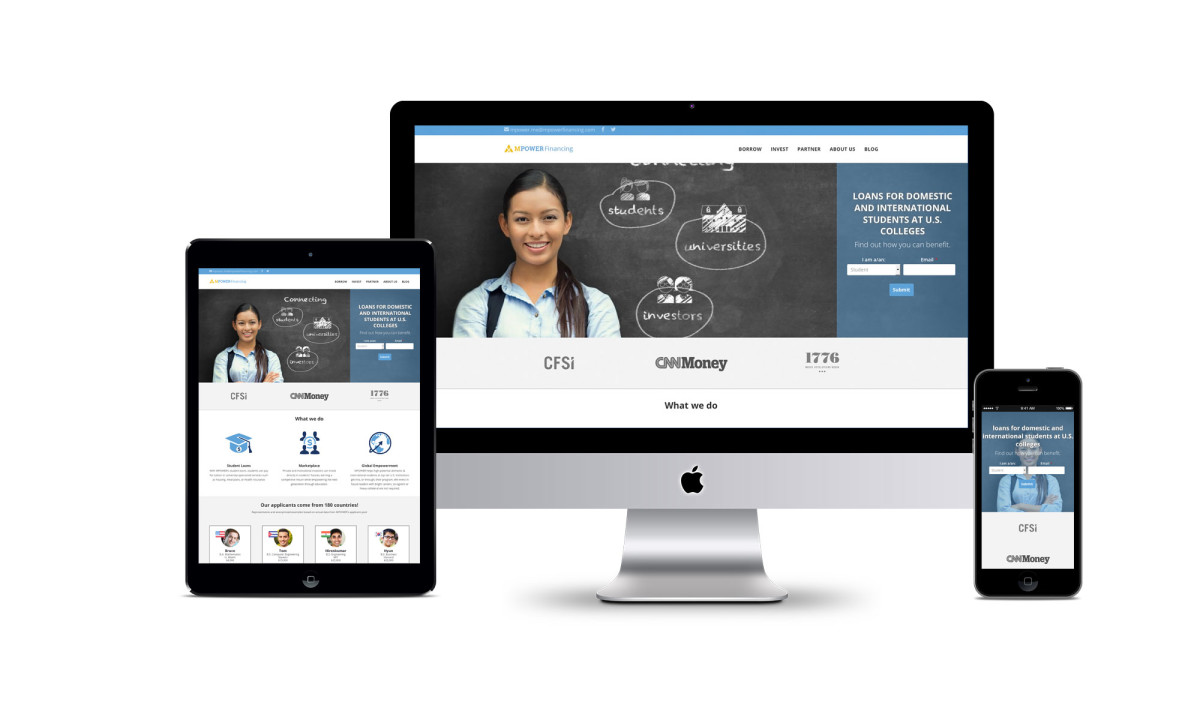As CEO and cofounder, Emmanuel Smadja’s goal for MPOWER Financing is that, next year, someone will dress as the MPOWER(ed) man for Halloween.
Yes, this MPOWER(ed) man:
D.C.-based MPOWER Financing provides crowdsourced loans for student financing. As Smadja puts it, “we make loans to students that are high-potential, but left out of traditional financing options.”
- For students — those that are two years or less away from graduating and have good grades — an MPOWER loan is a way to make it through school.
- To investors, it’s a double bottom line investment — offering fiscal returns while at the same time making a positive impact on the lives of students.
MPOWER’s students fall into two broad categories: international students and domestic students whose parent’s are unable to cosign a traditional loan. In both cases, MPOWER is aware that they’re working with students who do not have an established credit history.
In order to work around this, MPOWER assesses student’s creditworthiness on a different basis. “What we say is, ‘Who cares where you come from or how much money your family has. What really matters is you and your own potential,'” Smadja said. “We can determine that [potential] based on a lot of factors — which school you’re at, what major you’re studying, what degree you’re in, how close you are to graduating, what your grades are, what your scores are, and then on the professional side — what internship experience do you have, what work experience do you have.”
That even includes projected future earnings. “We want to make sure that we’re not putting students into debt that they can’t keep up with,” he added.
Officially launched just this past May, MPOWER has received over 1,000 applications to date. Perhaps surprisingly, given the large array of information that MPOWER looks at in order to assess a student’s creditworthiness, the company claims that it only takes 15 minutes for students to apply on their platform.
As the platform hosting the interaction between investors and student borrowers, MPOWER makes money in two ways. The primary way, according to Smadja, is the origination fee student borrowers are charged.
“We have an upfront, one-time origination fee that gets added to the balance of the loan,” Smadja said. “So for example, if I borrow $10,000, we add a 5 percent origination fee on top of it so you pay $10,500 over the 10 years of your loan.”
“We also make a small spread on the interest,” Smadja added, confirming the second way the company makes money. The interest on an MPOWER loan varies between 7.99 and 13.99 percent. “That’s higher than federal loans because those are subsidized,” Smadja said, “but those rates are pretty much in line with other private lenders.” And, he assured Technical.ly, compared to a pay-day loan or credit card, they’re much cheaper.
Moving forward, MPOWER is looking to grow quickly in order to provide loans to more students. “We’re shooting for about $2 million in volume this year,” Smadja said, “and then we’re shooting for about $20 million next year.”
They’re also looking to partner with more schools — being listed as a preferred, or even just available, lender on a university finance site is one way MPOWER spreads the word. “We were at one school in May, we’re at five now, and we’re shooting for about 30 next year,” Smadja told Technical.ly.
In addition to this rapid growth of their core product, MPOWER is always thinking about ways to expand to other products. “We’d love to be able to offer essential financial services,” Smadja said. For example, a pre-paid checking card, cellphone plan to call a student’s home country more cheaply or health insurance.
Another perennial goal is figuring out how best to help student borrowers build a traditional credit history and credit score, helping them become “part of the financial mainstream,” Smadja said.
The Halloween costume thing would be nice, too.
Before you go...
Please consider supporting Technical.ly to keep our independent journalism strong. Unlike most business-focused media outlets, we don’t have a paywall. Instead, we count on your personal and organizational support.
3 ways to support our work:- Contribute to the Journalism Fund. Charitable giving ensures our information remains free and accessible for residents to discover workforce programs and entrepreneurship pathways. This includes philanthropic grants and individual tax-deductible donations from readers like you.
- Use our Preferred Partners. Our directory of vetted providers offers high-quality recommendations for services our readers need, and each referral supports our journalism.
- Use our services. If you need entrepreneurs and tech leaders to buy your services, are seeking technologists to hire or want more professionals to know about your ecosystem, Technical.ly has the biggest and most engaged audience in the mid-Atlantic. We help companies tell their stories and answer big questions to meet and serve our community.
Join our growing Slack community
Join 5,000 tech professionals and entrepreneurs in our community Slack today!







